constituent assembly of india debates (proceedings)- volume vii
constituent assembly of india debates (proceedings)- volume vii
constituent assembly of india debates (proceedings)- volume vii
You also want an ePaper? Increase the reach of your titles
YUMPU automatically turns print PDFs into web optimized ePapers that Google loves.
(2) uniformity-in fundamental laws, civil and criminal, and<br />
(3) a common All-India Civil Service to man important posts.<br />
A dual judiciary, a duality <strong>of</strong> legal codes and a duality <strong>of</strong> civil services, as I said, are the logical<br />
consequences <strong>of</strong> a dual polity which is inherent in a federation. In the U. S. A. the Federal Judiciary and<br />
the State Judiciary are separate and independent <strong>of</strong> each other. The Indian Federation though a Dual<br />
Polity has no Dual Judiciary at all. The High Courts and the Supreme Court form one single integrated<br />
Judiciary having jurisdiction and providing remedies in all cases arising under the constitutional law, the<br />
civil law or the criminal law. This is done to eliminate all diversity in all remedial procedure. Canada is<br />
the only country which furnishes a close parallel. The Australian system is only an approximation.<br />
Care is taken to eliminate all diversity from laws which are at the basis <strong>of</strong> civic and corporate life. The<br />
great Codes <strong>of</strong> Civil & Criminal Laws, such as the Civil Procedure Code, Penal Code, the Criminal<br />
Procedure Code, the Evidence Act, Transfer <strong>of</strong> Property Act, Laws <strong>of</strong> Marriage Divorce, and Inheritance,<br />
are either placed in the Concurrent List so that the necessary uniformity can always be preserved without<br />
impairing the federal system.<br />
The dual polity which is inherent in a federal system as I said is followed in all federations by a dual<br />
service. In all Federations there is a Federal Civil Service and a State Civil Service. The Indian Federation<br />
though a Dual Polity will have a Dual Service but with one exception. It is recognized that in every<br />
country there are certain posts in its administrative set up which might be called strategic from the point<br />
<strong>of</strong> view <strong>of</strong> maintaining the standard <strong>of</strong> administration. It may not be easy to spot such posts in a large<br />
and complicated machinery <strong>of</strong> administration. But there can be no doubt that the standard <strong>of</strong><br />
administration depends upon the calibre <strong>of</strong> the Civil Servants who are appointed to these strategic posts.<br />
Fortunately for us we have inherited from the past system <strong>of</strong> administration which is common to the<br />
whole <strong>of</strong> the country and we know what are these strategic posts. The Constitution provides that without<br />
depriving the States <strong>of</strong> their right to form their own Civil Services there shall be an All India service<br />
recruited on an All- India basis with common qualifications, with uniform scale <strong>of</strong> pay and the members<br />
<strong>of</strong> which alone could be appointed to these strategic posts throughout the Union.<br />
Such are the special features <strong>of</strong> the proposed Federation. I will now turn to what the critics have had<br />
to say about it.<br />
It is said that there is nothing new in the Draft Constitution, that about half <strong>of</strong> it has been copied<br />
from the Government <strong>of</strong> India Act <strong>of</strong> 1935 and that the rest <strong>of</strong> it has been borrowed from the<br />
Constitutions <strong>of</strong> other countries. Very little <strong>of</strong> it can claim originality.<br />
One likes to ask whether there can be anything new in a Constitution framed at this hour in the<br />
history <strong>of</strong> the world. More than hundred years have rolled over when the first written Constitution was<br />
drafted. It has been followed by many countries reducing their Constitutions to writing. What the scope<br />
<strong>of</strong> a Constitution should be has long been settled. Similarly what are the fundamentals <strong>of</strong> a Constitution<br />
are recognized all over the world. Given these facts, all Constitutions in their main provisions must look<br />
similar. The only new things, if there can be any, in a Constitution framed so late in the day are the<br />
variations made to remove the faults and to accommodate it to the needs <strong>of</strong> the country. The charge <strong>of</strong><br />
producing a blind copy <strong>of</strong> the Constitutions <strong>of</strong> other countries is based, I am sure, on an inadequate<br />
study <strong>of</strong> the Constitution. I have shown what is new in the Draft Constitution and I am sure that those<br />
who have studied other Constitutions and who are prepared to consider the matter dispassionately will<br />
agree that the Drafting Committee in performing its duty has not been guilty <strong>of</strong> such blind and slavish<br />
imitation as it is represented to be.<br />
As to the accusation that the Draft Constitution has produced a good part <strong>of</strong> the provisions <strong>of</strong> the


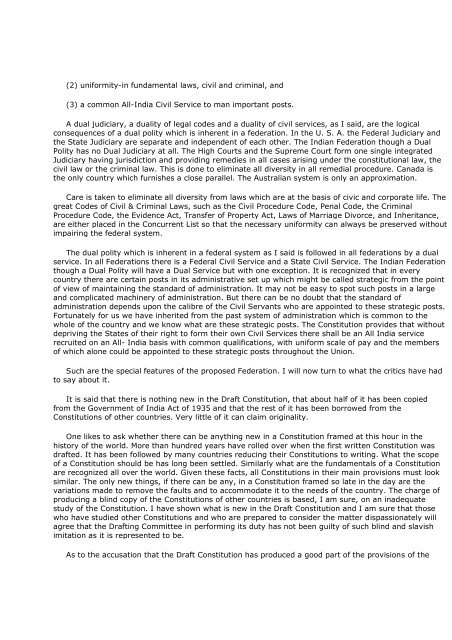
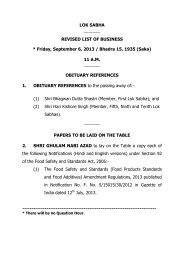
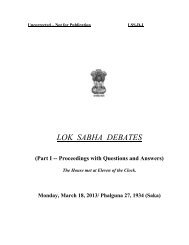

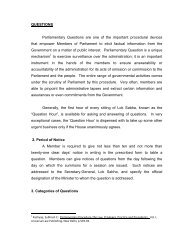
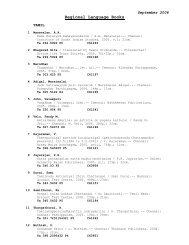

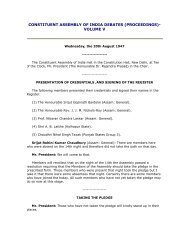
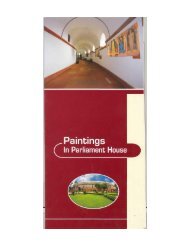
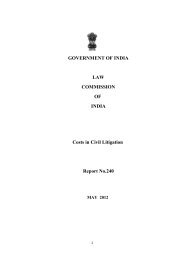
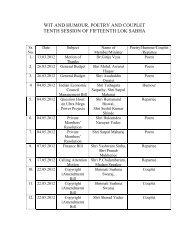
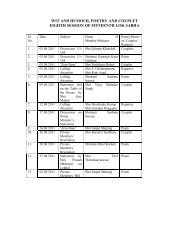

![gÉÉŌ A.]ÉŌ. xÉÉxÉÉ](https://img.yumpu.com/8015720/1/190x245/geeo-aeo-xeexee.jpg?quality=85)
